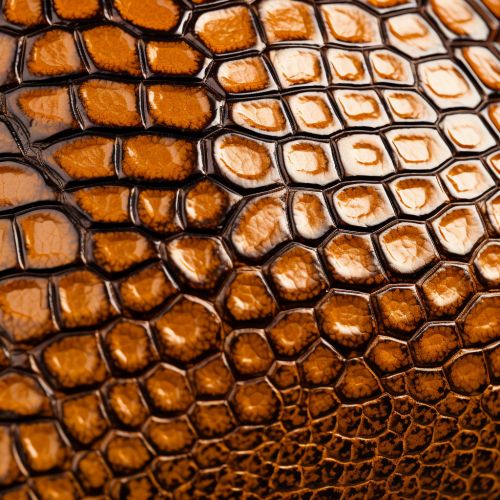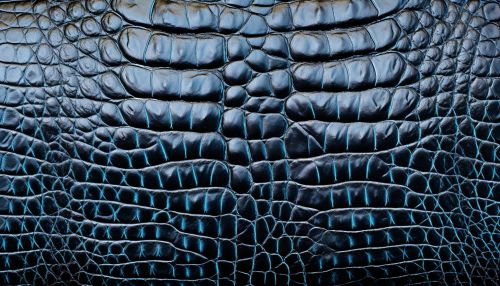Crocodile Skin
Introduction
Crocodile skin, the protective outer covering of the crocodile, is a highly specialized type of tissue. It is renowned for its durability, flexibility, and unique aesthetic appeal. Due to these properties, crocodile skin is often used in the production of luxury goods such as handbags, shoes, and watch straps. This article delves into the biology, structure, and uses of crocodile skin, as well as the ethical considerations surrounding its use.


Biology of Crocodile Skin
Crocodile skin is composed of two main layers: the epidermis and the dermis. The epidermis, the outermost layer, is relatively thin and serves as a barrier to water loss and pathogen entry. The dermis, located beneath the epidermis, is much thicker and contains the bulk of the skin's structures, such as blood vessels, nerves, and the specialized structures known as osteoderms.
Epidermis
The epidermis of crocodile skin is composed of keratinocytes, cells that produce the protein keratin. Keratin provides the skin with its toughness and water-resistant properties. The epidermis is continuously renewed through a process called keratinization, where new cells are produced at the base of the epidermis and gradually move towards the surface as they mature and die.
Dermis
The dermis of crocodile skin is rich in collagen and elastin fibers, which provide the skin with its strength and flexibility. The dermis also contains the osteoderms, bony plates embedded in the skin that form the crocodile's distinctive scale pattern. These osteoderms serve as both physical protection and as a means of thermal regulation, as they can absorb and release heat.
Structure of Crocodile Skin
Crocodile skin is characterized by its pattern of large, rectangular scales, separated by narrow grooves. Each scale contains an osteoderm, which gives the scale its rigid structure. The skin's color can vary widely, from dark green to light brown, depending on the species and the individual's age and habitat.
Scales
The scales of crocodile skin are not overlapping, as in many other reptiles, but are instead separated by deep, narrow grooves. These grooves, or interstitial skin, are more flexible and allow for the crocodile's movement. The scales themselves are highly keratinized and are shed individually, rather than in a single piece as in snakes.
Osteoderms
The osteoderms, or dermal scutes, are bony plates embedded in the dermis of the crocodile's skin. They are composed of bone and dense connective tissue, and are covered by the keratinized epidermis. The osteoderms serve as physical protection against predators and environmental hazards, and also play a role in thermal regulation.
Uses of Crocodile Skin
Crocodile skin is highly valued in the luxury goods market due to its unique aesthetic appeal and durability. It is used in the production of a variety of items, including handbags, shoes, belts, and watch straps.
Fashion Industry
In the fashion industry, crocodile skin is prized for its distinctive scale pattern, which adds texture and visual interest to products. The skin's durability and resistance to wear also make it a desirable material for high-end goods.
Leather Production
Crocodile skin is processed into leather through a series of steps that include skinning, curing, tanning, and finishing. The resulting leather is highly durable, flexible, and resistant to water, making it ideal for use in a variety of products.
Ethical Considerations
The use of crocodile skin in the fashion industry has raised ethical concerns. These include issues related to animal welfare, sustainability, and the impact of crocodile farming on local ecosystems.
Animal Welfare
Crocodiles are often farmed for their skin in conditions that raise animal welfare concerns. These include overcrowding, poor nutrition, and inhumane slaughter methods.
Sustainability
Sustainability is another concern, as the demand for crocodile skin can lead to overfarming and depletion of wild crocodile populations. Some companies have implemented sustainability initiatives, such as sourcing skins only from farms that meet certain animal welfare and environmental standards.
